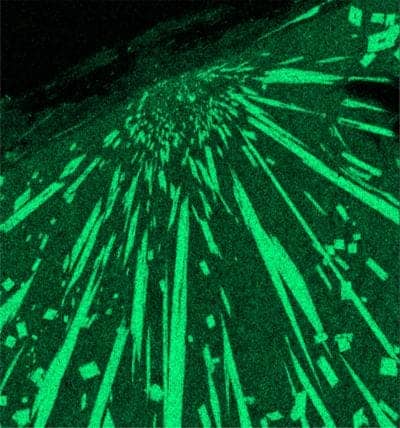
Photographed by: Mukul Sharma
A recent study has revived an older controversy, after Dartmouth Professor Mukul Sharma and his team reported what they claim is the first conclusive evidence that links an extraterrestrial impact in Canada with the beginning of the Younger Dryas, a period of abrupt climate change that caused major cooling through the Earth. During this time, a number of species became extinct and the human hunger-gatherer population transitioned to an agricultural based lifestyle.
In the 1.5-billion-year-old Quebecia terrane in northeastern Canada, near the Gulf of Saint Lawrence and modern day Quebec, researchers believe a comet or meteor impact took place, after at they analyzed the chemical composition of spherules discovered at the location (droplets of solidified molten rock expelled by the impact of a comet or meteor). The chemical composition matched those of spherules deposited in Pennsylvania and New Jersey at the start of the Younger Dryas period.
The Younger Dryas or the Big Freeze as its also been called began some 12,900 years ago and enveloped the world in a short lasting (in geological terms – some 1,000 years) glacial period. During this time, a number of species became extinct, including saber-toothed cats, giant sloths, and mastodons. The same event marked the end of the Clovis hunter-gatherer culture in favor of the adoption of farming and animal husbandry, as supported by evidence dated from the time collected from the Near East – coincidentally or not the region was also home to the earliest city settlements we know of (Ur, Uruk).
“The Younger Dryas cooling impacted human history in a profound manner,” says Dartmouth Professor Mukul Sharma, a co-author of the study. “Environmental stresses may also have caused Natufians in the Near East to settle down for the first time and pursue agriculture.”
The newly discovered spherules do not originate from the 4km-wide Corossal crater – a known impact crater in Quebec. This fact leads the researchers to conclude that a series of comet or meteor impacts caused the beginning of the Younger Dryas 12,900 years ago. The meteor/compact impact theory sparking the Younger Dryas isn’t new and has for a long time been contested. The current accept theory is that an ice dam rupture released huge amounts of freshwater into the Atlantic. This in turn was thought to have shut down ocean currents moving warm tropical water, resulting in colder conditions.
“It may well have taken multiple concurrent impacts to bring about the extensive environmental changes of the Younger Dryas,” says Sharma. “However, to date no impact craters have been found and our research will help track one of them down.”
Worth noting is that ZME Science reported earlier of a newly discovered meteor impact site in Mexico dating from 13,000 years ago, where an eclectic geological mix of materials, including nanodiamonds, impact spherules, and more, which, according to the researchers, are the result of a cosmic body impacting Earth. Apart from the Mexican site, the researchers also identified sediment layers of the same age, dating back 13,000 years ago, in Canada, the United States, Russia, Syria and various sites in Europe.
Findings appeared in the journal PNAS.


